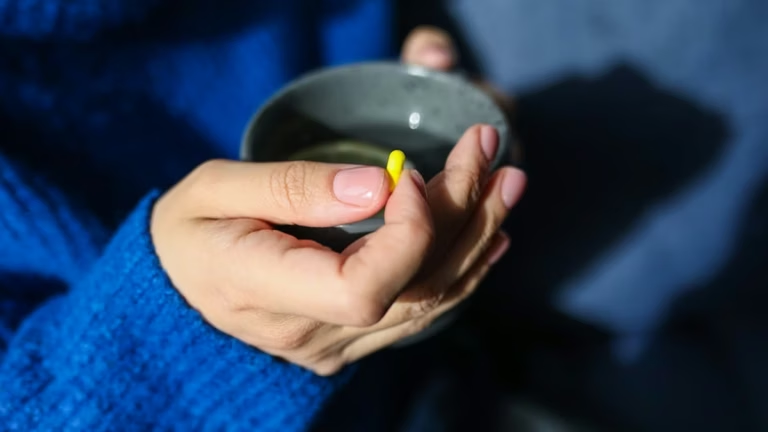Digital Detox for Mental Clarity: Reclaiming Your Focus in a Hyper-Connected World
The Allure and Overload of the Digital World
We live in an era of unprecedented connectivity. Smartphones, tablets, and computers have become indispensable tools for communication, work, and entertainment. While these devices offer numerous benefits, they also contribute to a constant state of stimulation and potential overwhelm. The relentless stream of notifications, emails, and social media updates can fragment our attention, leaving us feeling stressed, anxious, and unable to focus.
Think about it: how many times have you picked up your phone to check one thing and ended up scrolling through social media for 30 minutes? This constant switching between tasks and platforms drains our mental energy and hinders our ability to think clearly and creatively.
What is a Digital Detox?
A digital detox is a period of time during which you intentionally reduce or eliminate your use of digital devices such as smartphones, tablets, computers, and social media. It’s about creating space to disconnect from the digital world and reconnect with yourself, your surroundings, and the people around you. It’s not necessarily about quitting technology altogether, but rather about using it more mindfully and intentionally.
Benefits of a Digital Detox
The benefits of a digital detox extend beyond simply reducing screen time. They can significantly improve your mental and physical well-being.
- Improved Focus and Concentration: By minimizing distractions, you can train your brain to focus for longer periods.
- Reduced Stress and Anxiety: Constant connectivity can trigger anxiety and stress. Disconnecting allows your nervous system to calm down.
- Better Sleep Quality: The blue light emitted from screens can interfere with sleep. A digital detox, especially in the evening, can promote better sleep.
- Increased Creativity and Productivity: Stepping away from the digital world can spark new ideas and boost your overall productivity.
- Enhanced Relationships: Spending less time online allows you to be more present and engaged in your relationships with family and friends.
- Greater Self-Awareness: Detaching from technology provides an opportunity to reflect on your thoughts, feelings, and values.
How to Plan Your Digital Detox
Planning is key to a successful digital detox. Here’s a step-by-step guide:
1. Set Clear Goals
What do you hope to achieve with your digital detox? Do you want to improve your sleep, reduce stress, or enhance your relationships? Defining your goals will help you stay motivated and focused.
2. Define Your Boundaries
How long will your detox last? What devices and apps will you avoid? Be specific about your limitations. For example, you might decide to avoid social media for a week or limit your phone usage to essential calls and texts.
3. Choose Your Activities
What will you do with your newfound free time? Plan activities that you enjoy and that don’t involve screens. This could include reading, spending time in nature, exercising, or pursuing a hobby.
4. Communicate Your Intentions
Let your friends and family know that you’ll be less available during your detox. This will help them understand why you’re not responding to messages immediately.
5. Start Small and Be Flexible
If you’re new to digital detoxes, start with a shorter period, such as a few hours or a weekend. Don’t be afraid to adjust your plan as needed. The goal is to create a sustainable practice that works for you.
Practical Tips for a Successful Detox
Here are some practical tips to help you navigate your digital detox:
- Turn off Notifications: This is one of the simplest and most effective ways to reduce distractions.
- Designate Tech-Free Zones: Create areas in your home, such as the bedroom, where digital devices are not allowed.
- Use a Physical Alarm Clock: Avoid using your phone as an alarm clock to resist the temptation to check it first thing in the morning.
- Schedule Regular Breaks: Take short breaks throughout the day to step away from your screens and stretch your body.
- Find Alternative Activities: Replace your digital habits with activities that nourish your mind and body.
- Use Apps to Track Your Progress: Ironically, some apps can help you monitor your screen time and encourage mindful usage.
- Be Kind to Yourself: Don’t beat yourself up if you slip up. Just acknowledge it and get back on track.
Reintegrating Technology Mindfully
The goal of a digital detox isn’t to abandon technology forever. It’s about developing a healthier relationship with it. After your detox, be mindful of how you reintroduce technology into your life. Set limits on your usage, prioritize real-life interactions, and continue to practice mindful technology habits.
Consider these post-detox strategies:
- Schedule specific times for checking email and social media.
- Unfollow accounts that trigger negative emotions.
- Use technology to enhance your life, not to escape it.
Conclusion: Reclaiming Your Focus
In a world that constantly demands our attention, a digital detox can be a powerful tool for reclaiming your focus, reducing stress, and enhancing your overall well-being. By intentionally disconnecting from the digital world, you can create space for self-reflection, creativity, and meaningful connections. Embrace the opportunity to step away from the screen and reconnect with the present moment. Your mind will thank you for it.






